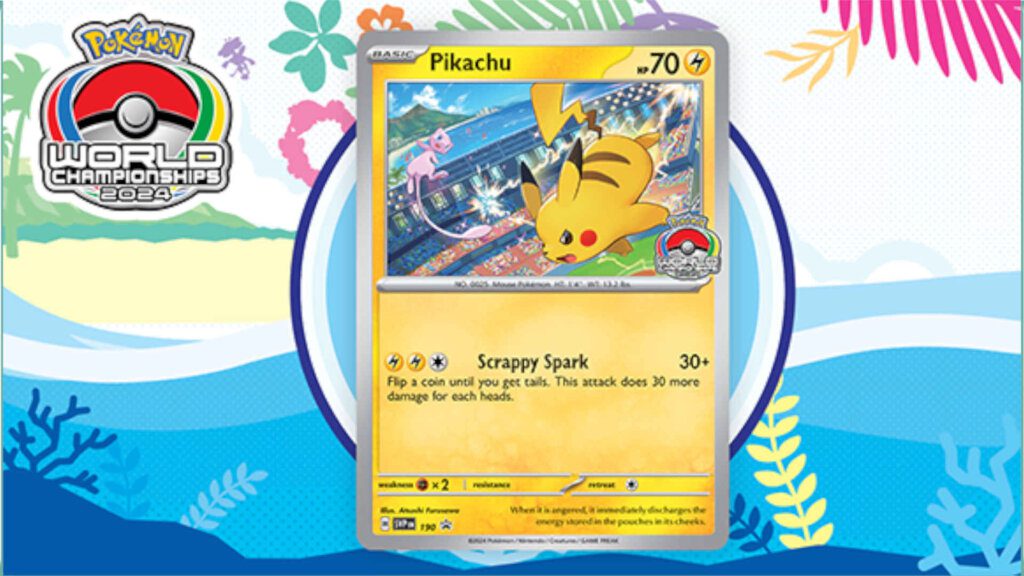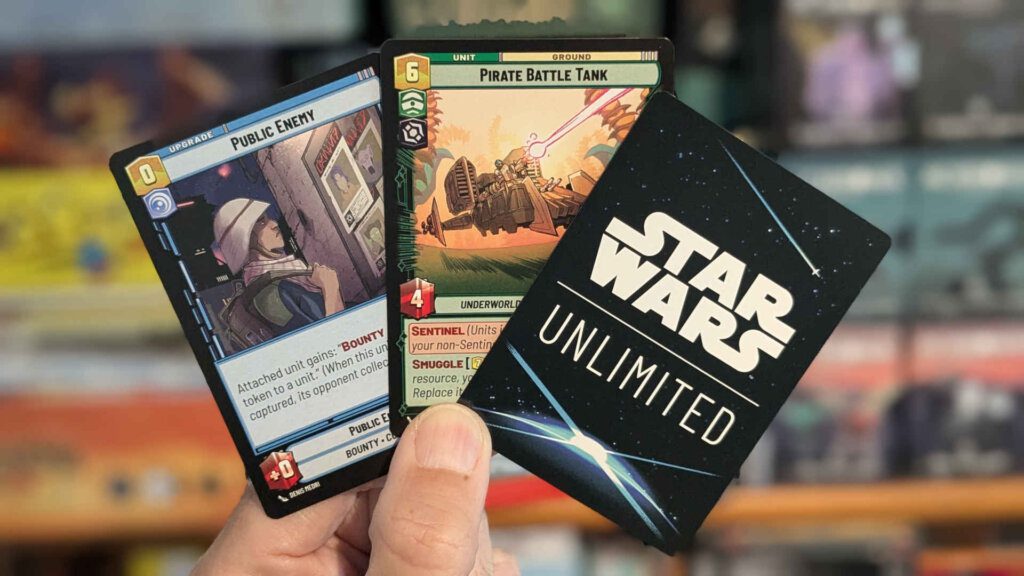There are many card games like Magic: the Gathering, Yu-Gi-Oh and Pokémon which have stood the test of time.
These games maintained their momentum and preserved their popularity over multiple decades. For every game like these three, however, there are many which haven’t lasted quite as long.
Some of these cancelled card games, despite no longer being in print, offer some fantastic gameplay experiences. Here are five of the best card games that are no longer around!
Table of Contents
Toggle5. Fire Emblem Cipher
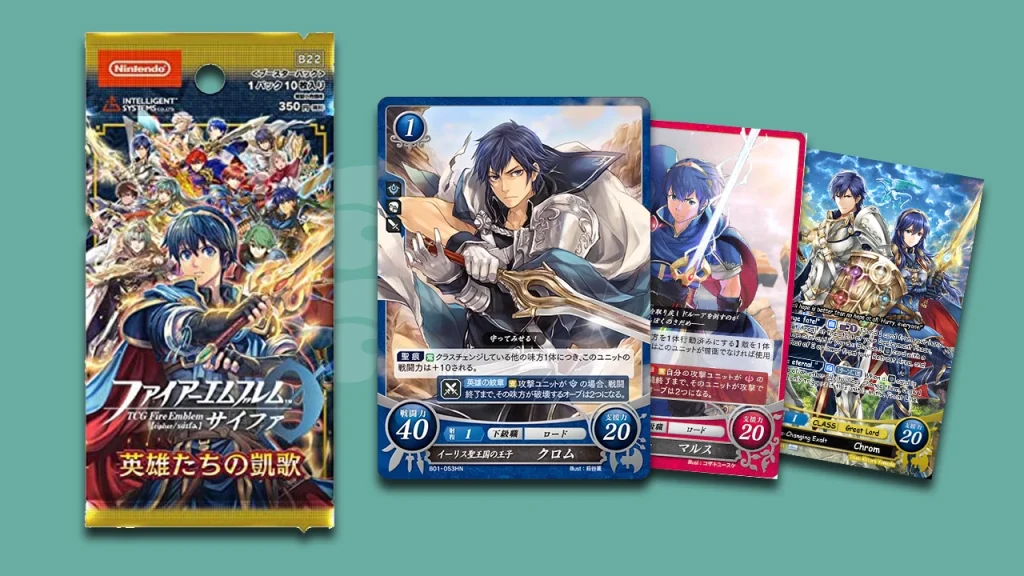
Fire Emblem is a strategy role-playing game series developed by Intelligent Systems and released on a variety of Nintendo consoles. The series has been running for a long time, the first instalment was released in 1990 and the most recent came out in January of 2023.
An experiment with a Fire Emblem card game started in 2001 but fizzled out in 2006. In 2015, for whatever reason, Intelligent Systems decided to give it another go and had another crack at making a Fire Emblem card game.
This time they developed their TCG in-house, rather than outsourcing it to another company. Konami’s success with Yu-Gi-Oh proves that it’s perfectly possible for a video game company to also manage a TCG, but Intelligent Systems were not quite as successful.
Fire Emblem Cipher was released on the 25th of June 2015 the same day as Fire Emblem Fates, the 14th game in the series. Fire Emblem Cipher, much like the first six instalments of the series it is based on, never got an English-language release.
Despite this, it maintained a dedicated international fanbase, who set up wikis translating the cards and clients to play the game online.


In Fire Emblem Cipher players choose a character from their deck to be their “Lord”. This Lord starts the game in play and a player loses when their lord dies. Every player also takes six cards from their deck and sets them aside as “orbs”.
These orbs function slightly like a reversed version of prize cards from the Pokémon TCG. When a player’s lord would die, they instead add one of their orbs to their hand. This is a clever mechanic as it keeps the momentum of the game balanced.
A player whose lord keeps getting destroyed gets supplied with a steady stream of cards, giving them the resources to attempt to turn the game around. Players play other units to support their lord and promote their characters to stay competitive as the game moves forward.
Many of Fire Emblem Cipher’s mechanics may feel familiar to people who have played Cardfight!! Vanguard.
Fire Emblem Cipher cards are all full art and have a heavily anime-inspired style. Although some of this artwork is a bit bizarre, a lot of it looks really neat. Some cards can be put together to form panoramas depicting notable moments from the series.
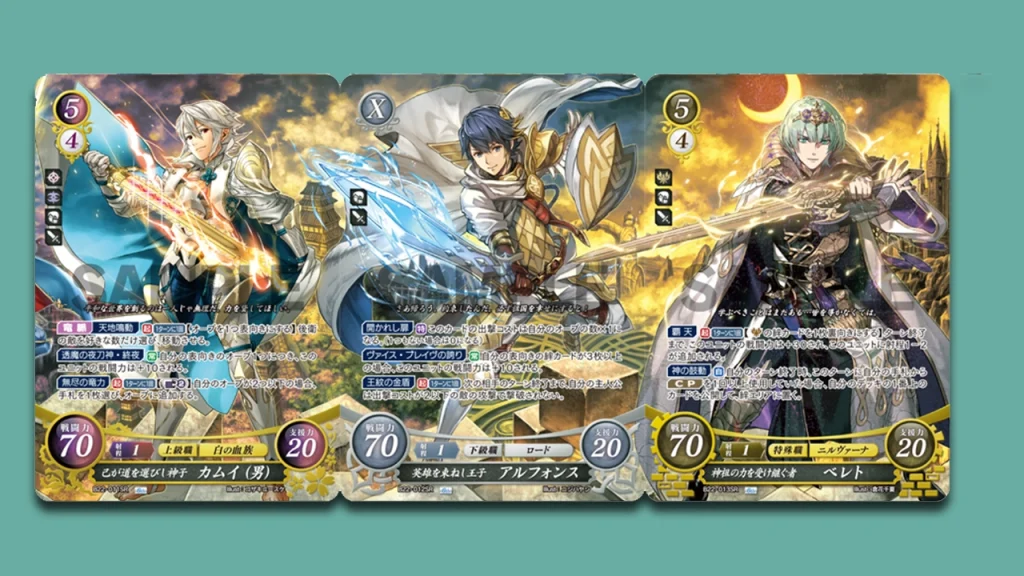

The last Fire Emblem Cipher set, which fans have translated as “The Heroes’ Paean” was released in October of 2020. The game was discontinued for two primary reasons. First of all, the Corona virus pandemic damaged sales and resulted in the cancellation of organised play events throughout 2020.
Secondly in a Livestream Ryota Kawade, the game’s main producer, announced that the role of Fire Cipher was now being fulfilled by the franchise’s mobile gacha app Fire Emblem Heroes.
The game’s final set acted as a celebration of its history, containing a slew of characters from every Fire Emblem game. Despite the game’s cancellation, many Fire Emblem Cipher fans are still brewing new decks and playing against each other to this day.
4. The World of Warcraft Trading Card Game
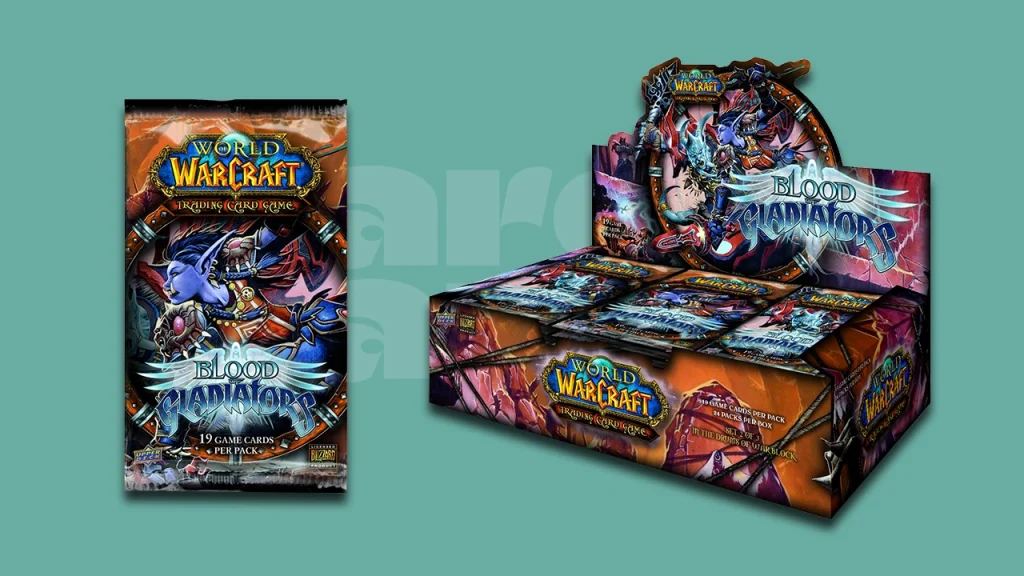

As the most famous Massively Multiplayer Online Role-Playing Game of all time, it’s almost certainly unnecessary to explain what World of Warcraft is to anybody reading this article. Blizzard Entertainment’s online juggernaut had a physical trading card game accompanying it from 2006 to 2013.
In the World of Warcraft TCG, each player controls a hero from either the Alliance or the Horde (the two primary factions in the online game). Players simply need to reduce the health of the opposing hero to zero to win.
They can summon allies, embark on quests, and get their hands on new equipment to help them to pull this off.
There are a few things which make the World of Warcraft TCG unique. First of all, it has a cooperative game mode. Raid and Dungeon decks were designed to bring famous sites from Azeroth to the tabletop.


Several players would control a party of characters venturing into the depths of darkness, whilst one player would use the Raid or Dungeon deck to bring out monsters and threats to stop them.
Some packs of the World of Warcraft TCG also feature “Loot Cards” which contain codes that unlock mounts and other rewards in the online game.
Due to the Warcraft card game’s cancellation, these mounts are now exceedingly rare, and they have given the World of Warcraft TCG packs containing them a very high value on the secondary market.
The cause of the World of Warcraft card game’s cancellation is no mystery. It was succeeded by Hearthstone, Blizzard’s digital TCG.
Hearthstone’s closed beta began on the 16th of August 2013, exactly a week before the announcement of the cancellation of the old card game. Hearthstone has replaced its predecessor so thoroughly that it is probably the first thing that comes to most people’s minds when they imagine the phrase “Warcraft card game”.
3. Duelyst


Duelyst was a digital card game that was developed by Counterplay Games and released in April 2016. A lot of the game’s funding came from a successful Kickstarter campaign which raised $137’707, more than double its initial goal of $68’000. Counterplay Games initially published Duelyst themselves, but in 2017 Bandai Namco took over the job of promoting and marketing the game.
Duelyst mixes the traditional card game experience with some elements borrowed from Strategy RPGs. Battles in Duelyst occur on a square grid. Each player controls a general who navigates this grid summoning creatures or structures and casting spells. Players need to destroy the enemy general to secure a win.
Duelyst employs pixelated sprites, with vibrant and splashy attack animations giving it a distinct visual style. The game features six factions with varied playstyles, from the Lyonar Kingdoms who summon tanky high health creatures to control the flow of battle to the Abyssian Host who flood the board with swarms of shadowy minions.


Servers for the game shut down in February of 2020. Although no reasons were given for the game’s cancellation in the announcement it was likely due to a lack of users.
The concurrent player count statistics on Steam demonstrate that, in the months leading up to Duelyst’s cancellation, there were often fewer than 100 players online at any given time.
Curiously cancellation was far from the end for Duelyst. In January of 2023, Duelyst’s developers shared the game’s source code and all of its art assets online. Richard Heyne, the game’s chief designer, announced that by making the game completely open source he was inviting fans to extend and modify what he and his team had created.
Steam now features two separate clients that players can use to play the game, Duelyst II and Duelyst GG. Each of these is run by a separate studio and both are continuing to evolve the game in different directions, using the same materials left behind by the game’s original creators.
2. The Game of Thrones Living Card Game
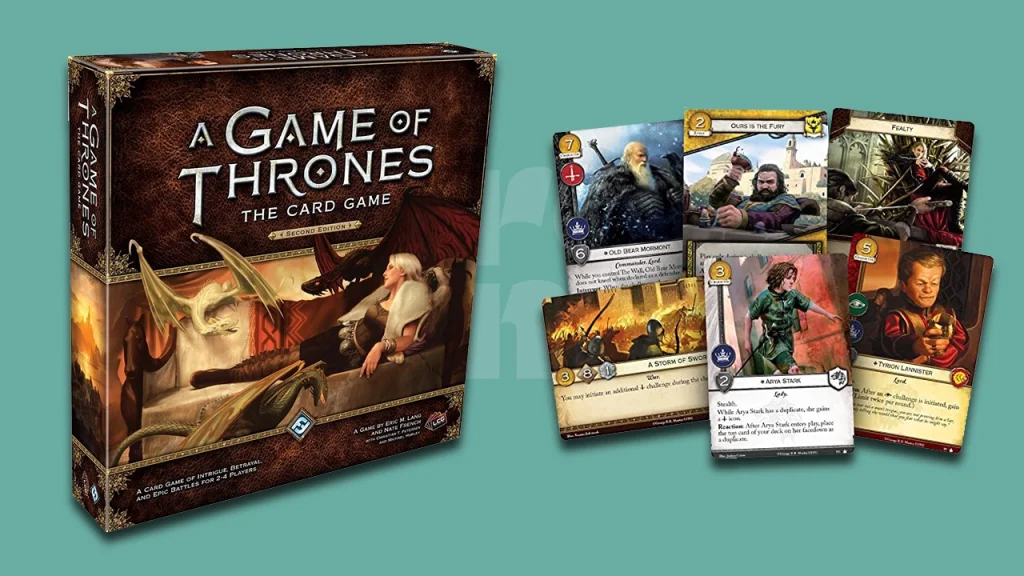

The Game of Thrones Living Card Game or ‘LCG’ was published by Fantasy Flight Games. The first edition of the game was created in 2002, nine years prior to the HBO series that made the realm of Westeros world famous. This game was later rebranded and re-released in 2015 when Game of Thrones mania was at its height.
In the Game of Thrones LCG, players can choose from eight different factions, seven of these factions are noble houses, but it is also possible to play as the Night’s Watch. Each faction has a distinct and thematically appropriate playstyle.
The Lannisters are great at flaunting their wealth and power, the Targaryens want to use their dragons to burn everything down, and the Night’s Watch want to turtle up and defend the wall.
Players win the game by collecting power tokens, and victory goes to the first player to collect 15 of them. Power tokens are gathered through several methods and the abilities of cards. Every turn players need to initiate challenges against one another.
Military challenges kill off the opponent’s characters, intrigue challenges force them to discard cards and power challenges directly steal their tokens.
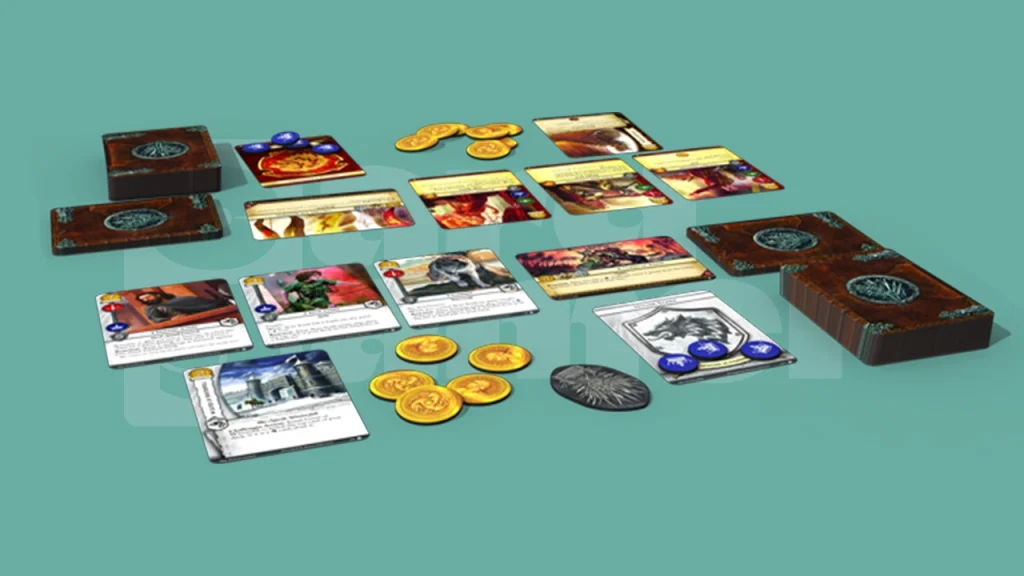

This is a really good system for telling stories through gameplay. Just what it means when one player’s knight defeats another player’s disgraced noble in an “intrigue challenge” isn’t directly spelt out. The game provides just enough information for players to imagine what’s going on and create a narrative in their heads.
There is even a 3-6 player game mode that plays a lot like Commander in Magic: the Gathering. Players are assigned positions on the small council and encouraged to scheme with or plot against one another. This is probably the best way to enjoy the game and it conveys the treacherous nature of the source material beautifully.
New cards were released in a few ways, but most often in chapter packs that came out regularly. These chapter packs initially attempted to follow the books releasing new characters, and depicting events in the order that they happened in the story. While this is an intriguing idea, it turned out to be unwieldy in practice.
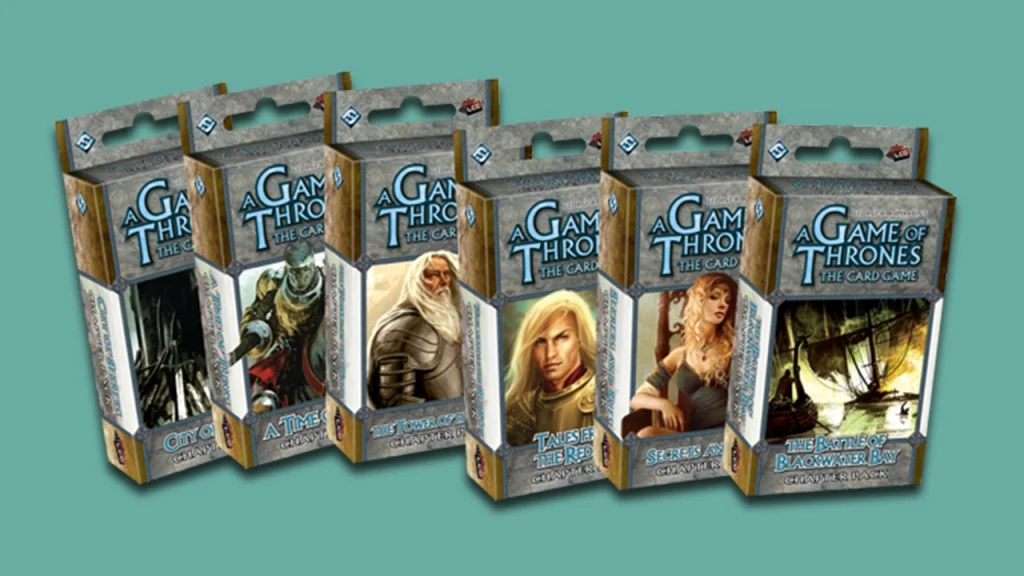

Every house isn’t involved in every single part of the books, but every chapter pack needed to contain new cards for all eight factions. This meant that lots of bulk characters got shoved into the game.
While characters like Jon Snow, Arya Stark and Cersei Lannister are household names, there are probably very few people out there who will be excited to put the likes of Shyra Errol, Talbert Serry or Maester Kedry into their decks.
By November of 2018, the card game had caught up with the most recent novel in the series and, with no new books on the horizon, a pivot was needed. The next set of chapter packs focused on different sites within the city of King’s Landing.
The final set of the Game of Thrones LCG was released in October of 2019. Entitled “The Things We Do for Love”, it rereleased a selection of iconic cards from the game’s first edition.
As the Game of Thrones TV show met an Ignoble end earlier in 2019, the card game was now based on a franchise that had lost the huge amount of prestige and acclaim it once held. The game made a quiet exit, but is still remembered fondly by its fans.
1. Android: Netrunner
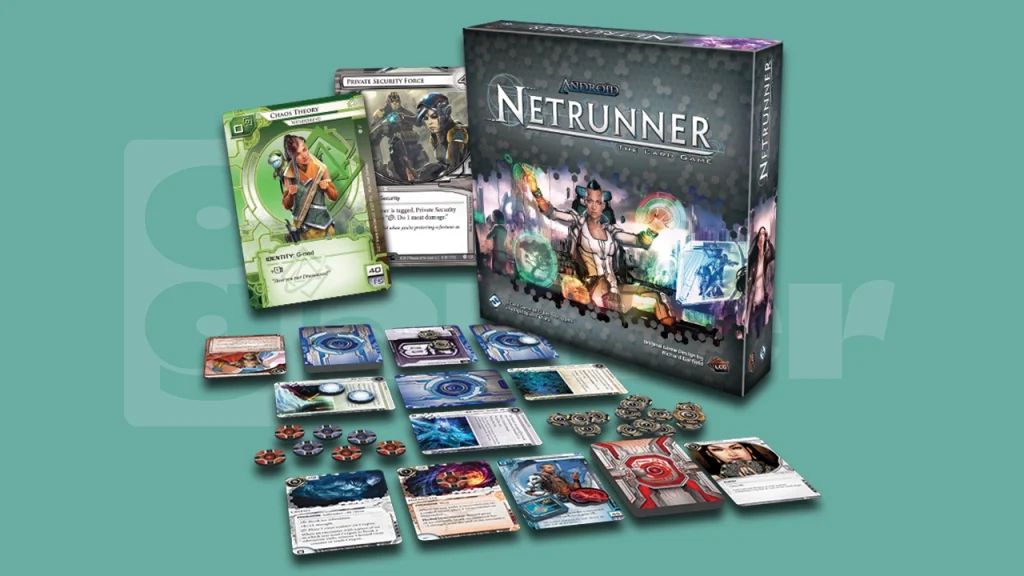

Android: Netrunner is probably one of the most well-known and beloved card games ever to get discontinued. Netrunner was designed by Richard Garfield and released in 1996, three years after he created Magic: the Gathering and invented the trading card game model as we know it.
The initial game didn’t last long, and it fizzled out in 1999. The game was relaunched as “Android: Netrunner” in 2012 when Wizards of the Coast agreed to license the Netrunner system to Fantasy Flight Games.
Fantasy Flight Games made some changes to the original card game. Most significantly, the setting was transplanted from the world of Cyberpunk 2020 to the Dystopian future presented in Android, a Fantasy Flight board game from 2008.
A few changes were also made to the rules and the business model shifted from being a regular trading card game where players crack cards in packs, to the “living card game model” where a smaller pre-set list of cards are released in expansions which players buy in their entirety.
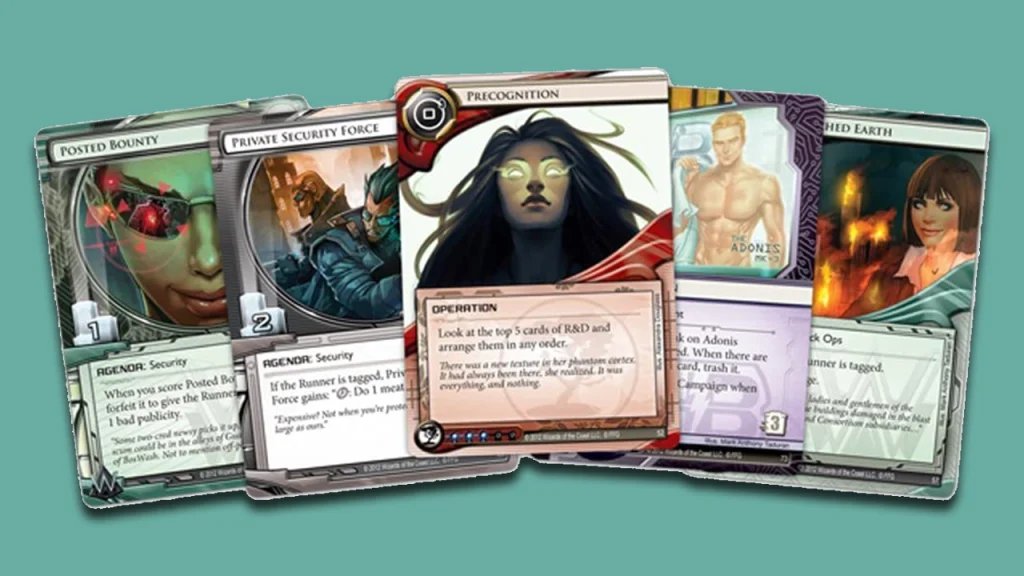

Netrunner is famous for its asymmetric gameplay. One player controls a cyberpunk hacker, one of the titular Netrunners, whilst the other player controls a villainous mega-corporation.
The corporate player’s deck contain several Agenda cards, they win by advancing these agendas and earning points from them. The Netrunner, meanwhile, aims to steal these agenda cards and earn the points for themselves instead.
The game was cancelled in October of 2018 when Wizards of the Coast did not renew Fantasy Flight Games’ licence to use the Netrunner system. The reasons for this are unclear and it’s the subject of much controversy. The game was still reasonably popular and, though not on the same scale as something like Magic or Yu-Gi-Oh, Netrunner had a competitive scene and a dedicated fanbase.
These fans have kept Netrunner’s legacy alive by unofficially continuing the game themselves. Null Signal Games, a non-profit run by Netrunner fans, started up the Nextrunner International Support & Expansion Initiative or “NISEI” a new system under which they develop and release their own Netrunner expansions.
These expansions are still coming out today, with the most recent being released in December of 2022. This stands as a testament to how devoted fans can keep their favourite games alive for years even once official support has wrapped up.
This article may contain affiliate links. If you use these links to purchase an item we may earn a commission. Thank you for your support.



